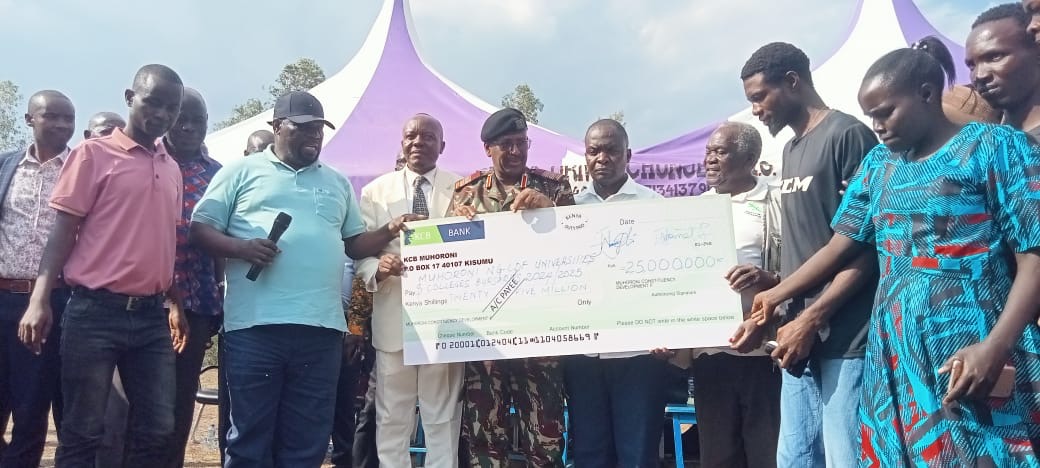Some names of places in Kenya are awash with history and literary lustre. Somewhat, a name goes beyond the lining of letters to sound sweet and pleasant to the ears of humankind. Put aptly, names are part of our collective conscience, culture, literary history and heritage. Some names of places in Kenya originated from economic activities, wars and contact with colonialists.
Firstly, there is the perfect application of colloquialism and charactonym in names of places. Ideally, colloquialism touches on a word or phrase that is not formal, used in ordinary conversation. Charactonym on the other hand, is a feature of style that suggests a distinctive trait of a certain character. For instance, while I was a Form Four candidate in Nyamninia Secondary School in Gem, my great Kiswahili teacher, Mwalimu Penina Nasimiyu, taught me Utengano by Said Mohamed with pizzazz. In that well-worded novel, the Tanzanian story teller has employed charactonym. In that page-turner, there is a character called Maksuudi who does things blatantly without thought. We also meet Madongoporomoka, an insalubrious place with dilapidated and dingy buildings; symbolising the squalor and stench in society.
In a riveting rehash, I remember fondly, as a teacher of English, I also taught The River and The Source by Margaret Atieno Ogola at Rev. Musa Gitau Girls School in Kiambu County, and Good Samaritan Secondary School in Nairobi City County. In that engrossing story, spanning over 100 years, and setting around the sultry shores of Nam Lolwe, associated with the Luo legend Nyamgondho K’Ombare; the writer from the good land of Asembo, narrates that Kisumu originated from Kisuma, the big market where people from that lacustrine land used to gather for barter trade.
Coming closer, I penned this piece and spruced it up at Shalom (Place of Peace), on Ngong Road, which sits in Rural Tents, presently known as Riruta. This is Dagoretti, initially known as the Great Corner. Cow Grade Lane, now known as Kawangware, is in close-range. Then, there is Kabete, which was Carpet Ville. Not far from here, is Kileleshwa, coined from Clay Land Swamp.
Again, all places I have pointed out are in Nairobi, the jungle of concrete, where roads such as Express Way have evolved to storeyed status. Being our capital city, it hosts tall buildings kissing and caressing scudding clouds in the skies. Venerable historians posit that the Maasai were its autochthons. Therefore, in this prose, I can say Nairobi rose from the Maasai phrase Enkare Nyrobi — meaning a place of cool waters.
READ ALSO:
KUPPET blasts TSC over teacher stagnation as police get promotions
Furthermore, along Nairobi-Nakuru Highway, there is Kinoo, which before corruption of the name was Kings Knot. If you are fond of driving along that busy highway, then you must also have seen Sigona, not far from Kikuyu Town, which blossomed from Singers with Honour. Still in Kikuyu, there is Thogoto, where I learnt my tricks of trade — English. When the Church of Scotland Mission settled in this chilly land, they created small Scotland by building schools, church and mission hospital. Ostensibly, the aborigines of this lush land could not pronounce the name Scotland correctly. They puffed it as Thigoto, and thus the name Thogoto was born.
Arguably, when foreigners visited the coast, they met natives, who toured with them around. There was a big rock in the old town close to Fort Jesus built by the Portuguese. Natives talked of the big rock using the Kiswahili word mwamba sasa. When white men heard that, they asked, so this is Mwombasa? The good guides nodded to approve it. Same to Mtwapa, coined from Kiswahili words mtu wa apa.
Consequently, Limuru is close to ilmur to mean donkey droppings, in tribute to many of donkeys found there. Then, the name Naivasha came from enaipasha, meaning the lake. Nakuru sprouted from Nakuro, meaning dusty place. Nyahururu in Laikipia came from enaiwurwur meaning a windy place. In Bomet County, there is Tenwek. People know the place because it is the home of one of the oldest hospitals built in 1936. People say Tenwek came about when it took people ten weeks to make a beeline for it from Mombasa.
Additionally, in Baringo County, there is Kabarnet Town, named after a Frenchman Barnet, who in the distant past settled there, and made it his home (Ka Barnet). In Kabarnet Town there is Kapropita Girls School, developed from Corporal Peter, a settler who stayed there in the years of yore. Before you reach Nanyuki Town, there is Naromoru, a cool place on the leeward side of Mt. Kenya, which originally meant Narrow Mall.
Ipso facto, some places got their names due to the corruption of English words and a special type of word play called homophonic pun. The places include: Roysambu (royal suburbs), Endebes (end of base), Eregi (the ridge), Karinde (Karen end), Rumuruti (remote route), Ikolomani (gold mine), Kilifi (cliff), Kariobangi (carry your bags), Sotik (so thick), Kinangop (king’s gulf), Kirigiti (cricket), Longisa (long distance), Rodi Kopany (Road Company), Karatina (quarantine), Kariakor (Carrier corps), Garsen (Garrison) et cetera. You can add more names to this long list.
Finally, in Western Kenya, when girls reported at Bunyore Girls School, the white men told the girls that they went there to ‘Aim Higher’. The original inhabitants picked it and made it the name of the place — Emuhaya.
By Victor Ochieng’
The writer is a peripatetic speaker. vochieng.90@gmail.com. 0704420232
You can also follow our social media pages on Twitter: Education News KE and Facebook: Education News Newspaper for timely updates.
>>> Click here to stay up-to-date with trending regional stories
>>> Click here to read more informed opinions on the country’s education landscape






